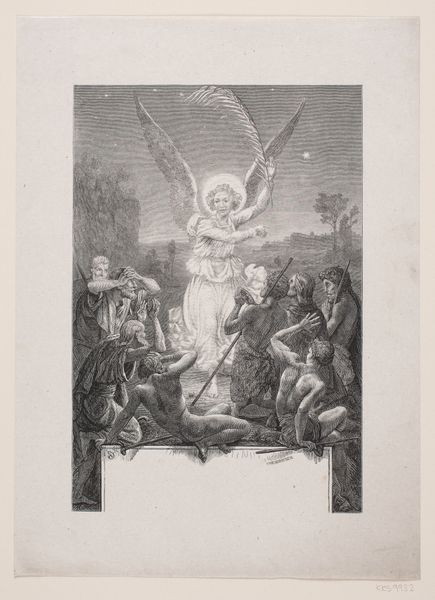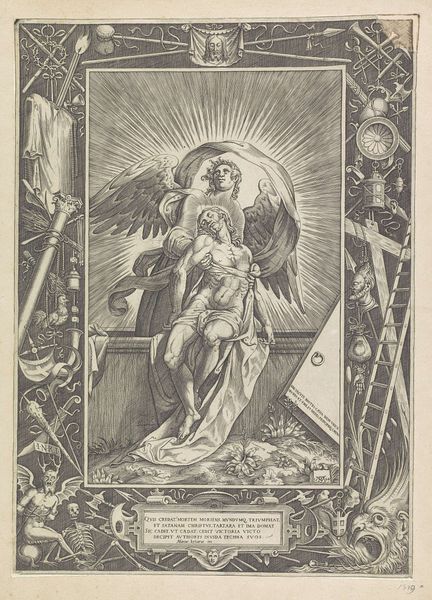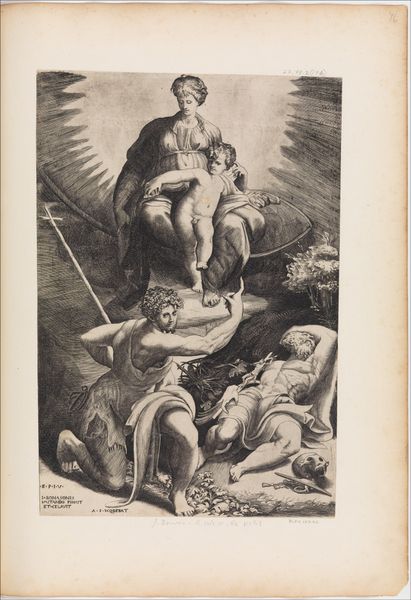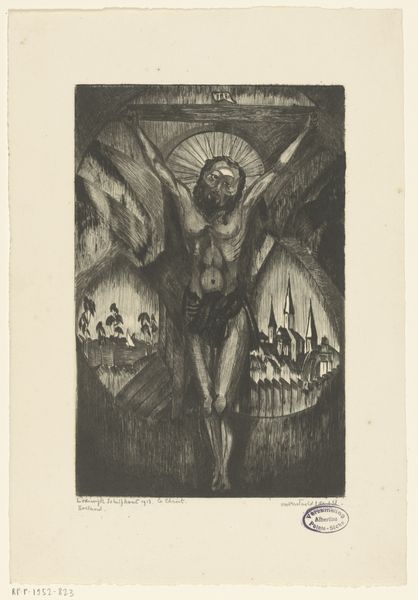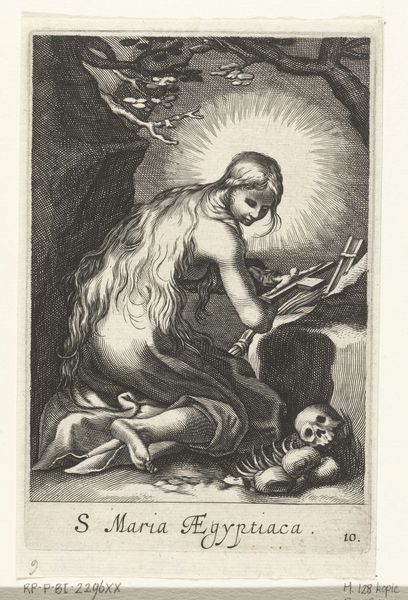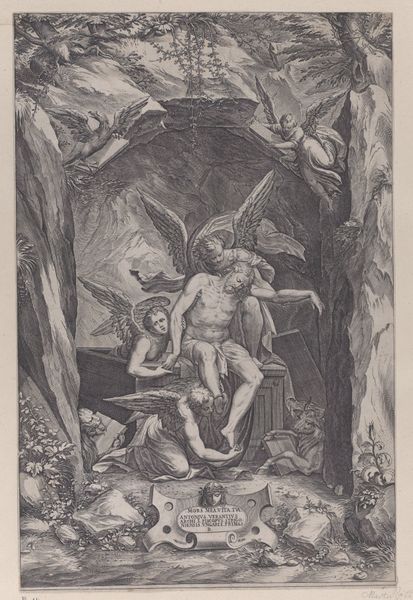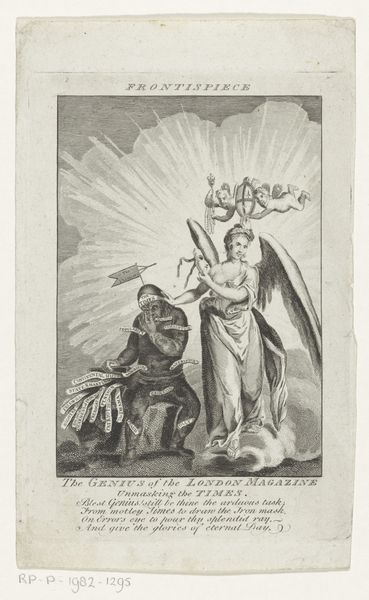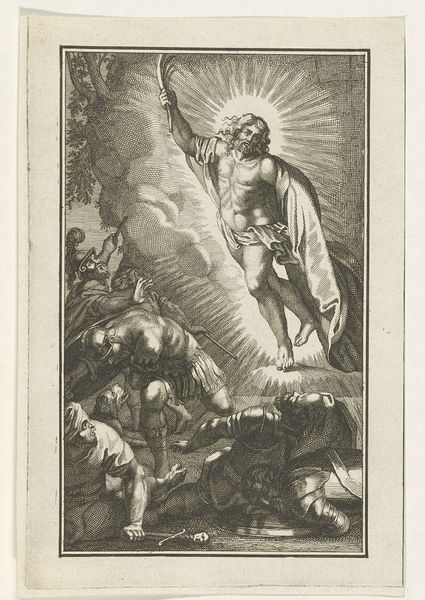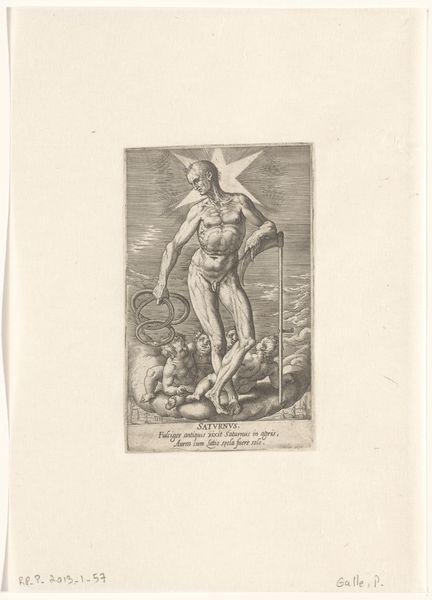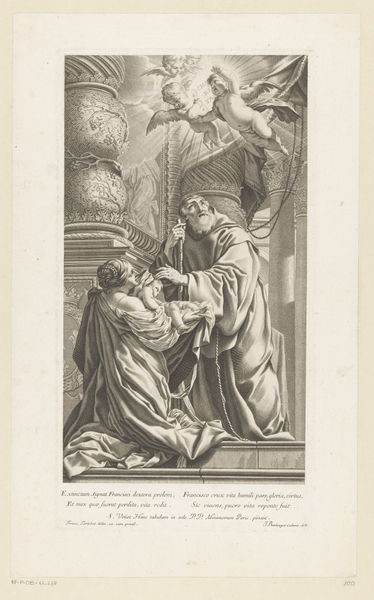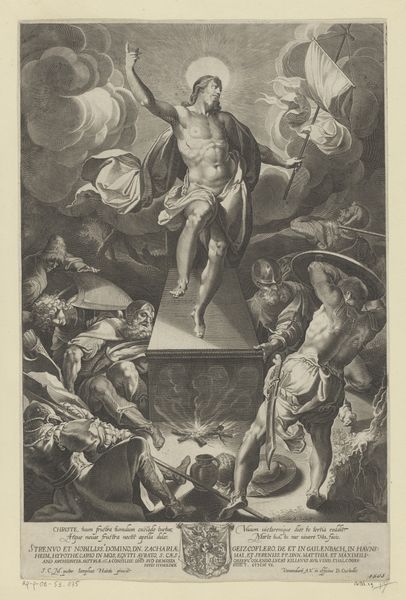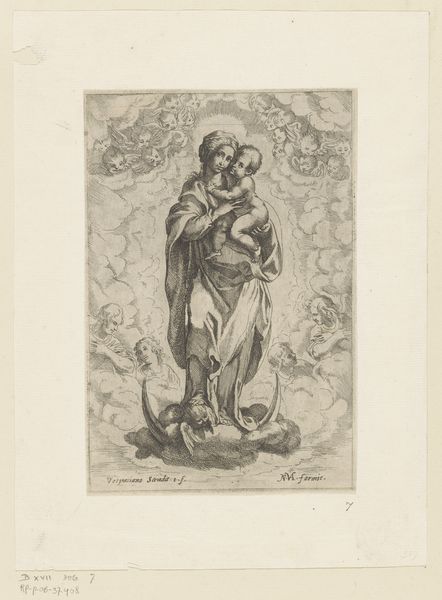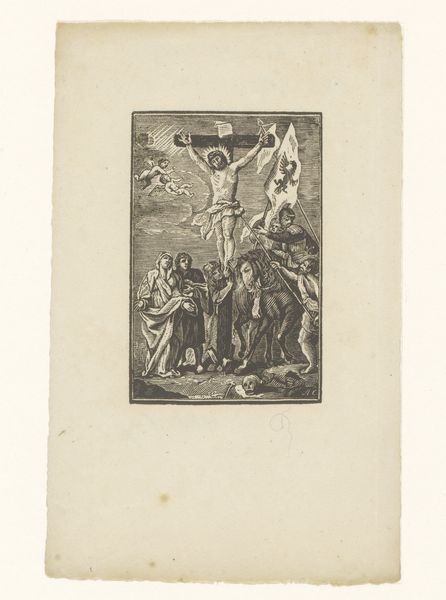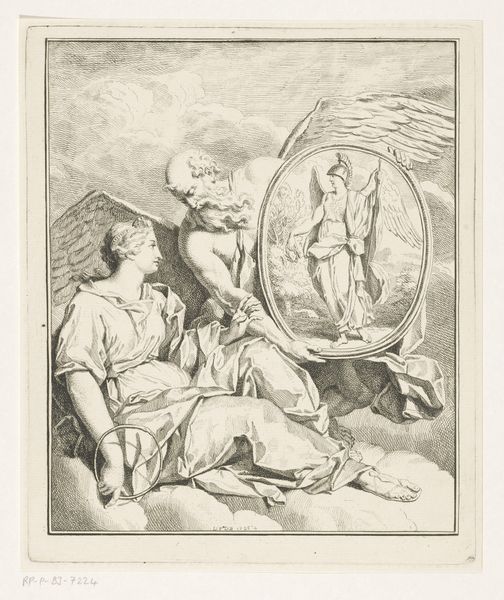
print, engraving
#
allegory
# print
#
old engraving style
#
caricature
#
figuration
#
11_renaissance
#
history-painting
#
northern-renaissance
#
engraving
Dimensions: height 334 mm, width 228 mm
Copyright: Rijks Museum: Open Domain
Curator: This engraving from 1579, crafted by Domenico Vito, is titled "Allegory of Faith". What are your first impressions? Editor: It’s stark, even bleak. The contrasting areas of light and shadow accentuate the ethereal figure of Faith and that rather graphic depiction of mortality below. Curator: It's a potent representation of the period's religious and philosophical struggles, I believe. The placement of Faith above a skeleton, a traditional memento mori, suggests a victory over death, as well as triumph over temporal corruption through adhering to faith. Editor: Right. Look at how her gaze directs upward, towards a kind of divine light, versus downward towards this graphic representation of human remains and decay. There is quite an explicit formal construction reinforcing that symbolic verticality. Also, there is this emphasis through very fine lines suggesting both heaviness of clouds but also a radiant glow emanating from above the central figure that suggests something that is just beyond visual and sensory apprehension. Curator: You're right; I am intrigued by this interplay of textures and use of engraving style to convey this dualism and drama between temporal and religious planes. This work appears amidst a period of the Protestant Reformation where the Roman Church struggled to reassert its dominance via a more active visual engagement using propaganda imagery. The book in her left hand, presumed to be the bible, literally elevates the primacy of doctrine. Editor: What I see in her, I'd say, is not triumph but a pensive acknowledgment of temporal life. Note the somewhat troubled brow and gesture of the face. It suggests more of the inner psychological effect of faith or doubt and their close relation than say outward expression or domination that is present in religious propaganda that you reference. It’s really quite brilliant! Curator: A nuanced reading, certainly. Its display was almost certainly didactic, aiming to educate and to reinforce specific beliefs—that in the face of mortality, salvation rests with faith and doctrine. Editor: Perhaps… But the artist seems to be using the graphic language to present this tension with a self-reflective angle rather than something forceful. I am struck by the way this artwork manages to capture this intense moment. Curator: Indeed, a point well-argued. It underscores how artworks from this period serve both as cultural artifacts and, ultimately, ambiguous sites of personal, emotive reflection.
Comments
No comments
Be the first to comment and join the conversation on the ultimate creative platform.
